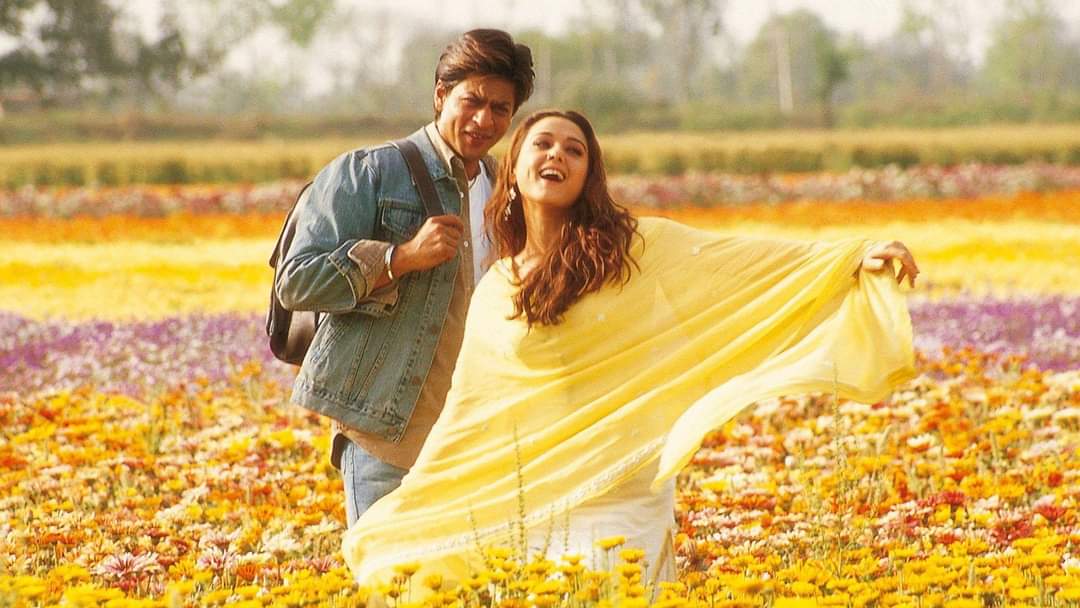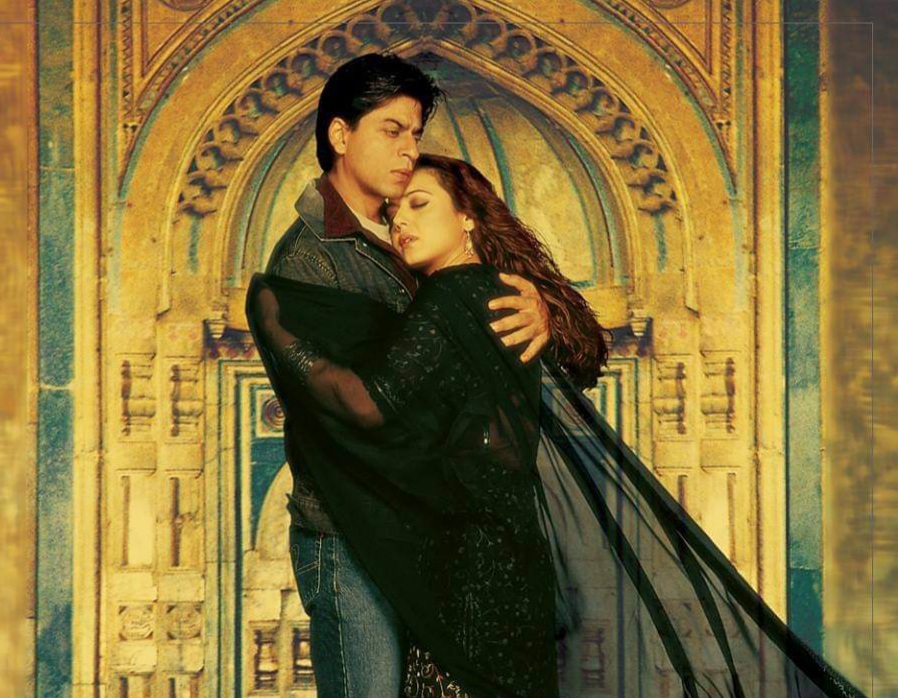‘Veer-Zaara’ (2004) brought the late Yash Chopra, Lata Mangeshkar and the late Madan Mohan’s melodies together. Sanjeev Kohli, son of the late composer, recreated the songs on request of Yash Chopra and he was asked to dig through the old cassettes which contained several unused tunes and recorded songs from shelved movies. Once the tunes were chosen, several ones were added to make one tune, while others were polished to suit a more contemporary style. With eleven tracks in the album, Javed Akhtar was assigned the mammouth task of writing the lyrics as Yash Chopra’s then favourite, Anand Bakshi, sadly passed away in 2002.
“Tere Liye” rendered perfectly by Roop Kumar Rathod and Lata Mangeshkar has a charm which is hard to be described. Resting on a light and simple tune, the injection of classy musical notes like the piano and guitar pieces, elevate it higher, to a standard which only matches the Yash Raj brand of music. The orchestration is superbly done and the touching lyrics are emotionally expressed by both singers in a way that one can feel the depth of the poetry in their vocal expressions.

“Main Yahan Hoon” is a solo by Udit Narayan, who makes all the required efforts to give this old tune his best shot. The mukhda is pleasing but the song does sound outdated at places. Nevertheless, the guitar interludes make up for it as well as the old school ochestration which has been heavily used for this particular song. The rendition by Udit Narayan is a class above and easily reminds music listeners of his ‘Darr’ (1993) songs for Yash Chopra.
Gurdas Mann starts “Aisa Des Hai Mera”, which has shades of a Punjabi folk and patriotic song. Udit Narayan delivers another fanastic performance. Pritha Mazumder is mostly heard in the background while Lata Mangeshkar makes a small appearance. The orchestration goes the traditional way and becomes very folksy at places.
“Yeh Hum Aa Gaye Hai Kaha” is a typical Yash Chopra’s song, which is instantly likeable once the music flows. Lata Mangeshkar and Udit Narayan carry the song on their shoulders and one feels nostalgic about ‘Dil To Pagal Hai’ (1997) songs. The use of synthesizers, piano, flute, saxophone add magic to this Madan Mohan tune. The way Sanjeev Kohli has blended all the instruments in creating a new sound is exemplary. The second interlude is one of the most beautiful interludes in any Yash Chopra’s movies.

Sonu Nigam and Lata Mangeshkar come together for “Do Pal”, which is a slow paced song and going by the tune, it does show its age. Composed somewhere in the mid ’60s, Sonu Nigam sounds like Mohd. Rafi in this duet with The Nightingale of India. Sanjeev Kohli has put a lot of efforts in reworking the song to suit the movie’s script and Yash Chopra’s vision.
The explosive duo, Nigam and Mangeshkar (heard only in the background) is back in “Kyun Hawa”. The song relies on a simple tune with no over the top orchestration. Yash Chopra opens the track with some commentaries. The track is pleasing to the ears because of its smooth flow.
“Hum To Bhai Jaise Hain” is a Lata Mangeshkar solo all the way. Another light composition from the music maestro Madan Mohan, it is breezy and enjoyable. The orchestration is minimal.
“Aaya Tere Darr Par Deewana” is a qawalli enthusiastically rendered by the Hussain Brothers (Ahmed Hussain and Mohammad Hussain) and Mohd. Vakil. It changes the tone of the album right away with its vivid orchestration.
“Lodi” is a Punjabi number, beautifully sung by Udit Narayan, Lata Mangeshkar and Gurdas Mann. With its chorus and the dholak sound, Sanjeev Kohli has completely reworked this Madan Mohan tune into a situational song.

Who would have thought that the stalwarts of Hindi cinema like Madan Mohan, Lata Mangeshkar, Jagjit Singh and Javed Akhtar will be credited for one song? Well, Yash Chopra made it happen. “Tum Paas Aa Raahein Ho” is a typical ghazal with a rather passable tune. The song doesn’t try to impress either.
Lata Mangeshkar comes with a romantic solo titled “Jaane Kyon”. It has been said that Madan Mohan always had Lata Mangeshkar in mind when he was composing a song and it is no wonder why this song fits her style of singing. It is a simple, yet deep song with a light orchestration and nice lyrics. A must listen for all fans of Lata Mangeshkar. The saxophone musical interludes are very pleasing.
‘Veer-Zaara’ remains an album which offers variety, scores highly in the orchestration and melody department. What works is the selection of singers for each song, the depth of the tunes and careful composition of the preludes and interludes. Sanjeev Kohli did a remarkable job in recreating the tunes based on Yash Chopra’s script. Even though the songs were composed for situations best known to the late Madan Mohan, his son connected the dots. Compared to the songs of Yash Chopra’s earlier venture, ‘Dil To Pagal Hai’, which had music by Uttam Singh, ‘Veer-Zaara’ went a step ahead with the orchestration and arrangements, considering that Uttam Singh is a top notch arranger. Javed Akhtar essayed poetry which the script demanded. ‘Veer-Zaara’ is a classic, which will still be appreciated in 100 years.